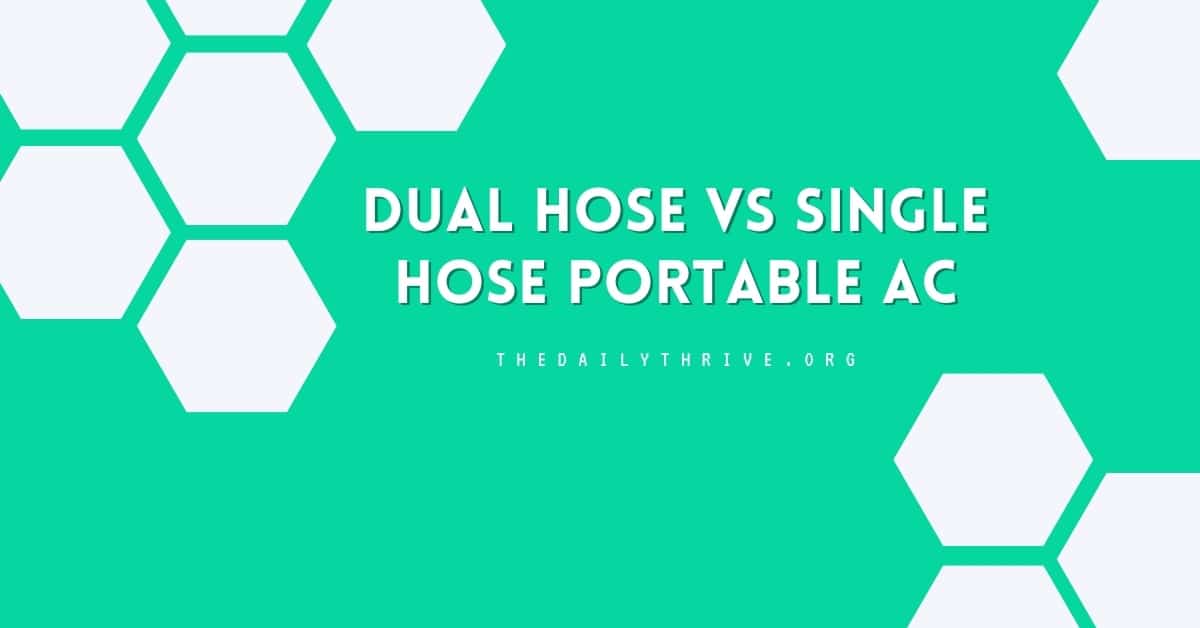Since each type of portable unit offers distinct advantages and disadvantages, it’s worth taking a few minutes to understand the difference between dual hose vs single hose portable ac before buying.
Portable air conditioners are cooling units that can be moved to the space where they are needed. They are designed to be mobile, with wheeled bottoms, handles, or latches to place in windows. Just plug one into a standard electric outlet to begin cooling air.
Even though portable ACs vary in cooling capacity, energy efficiency and noise output, they more or less all look the same – an upright box with air vents on the sides. Aside from cosmetic variations, the only real visible difference between different portable air conditioning units is that some have one exhaust hose, and some have two hoses.
Single Hose Portable Air Conditioner
All portable air conditioners remove heat from the room’s air with the power of a condenser and a compressor. That removed heat is vented outdoors using an exhaust hose while the cold, conditioned air is circulated back into the room. (Read more about how air conditioners work.)
However, because the compressor itself creates heat during the process, additional air must be drawn into the unit to cool it.
A single hose portable AC takes some of the cool air from the room and uses it to cool down the compressor….and then shoots it outside. Not only does this waste a significant proportion of already-cooled air, but it also creates what is known as “negative pressure” in the room. In order to replace the air lost through the exhaust, warm air from adjacent rooms will seep in, which decreases overall cooling efficiency. The AC will have to work harder to keep the room cool.
It also means that it will take longer to cool down a room when you first turn it on.
Single Hose Pros
- Fresh air is brought into the room
- Uses less electricity
- Lower purchase price
Single Hose Cons
- Warm air seeps into the room to replace exhausted air
- Cools room more slowly
Dual Hose Portable Air Conditioner
In contrast, dual hose portable air conditioners use the second hose to draw air from outdoors to cool the compressor. One hose draws in fresh air from the outside into the machine to cool it down; the other serves as an exhaust hose to release warm air back outside.
Because there is no loss of ambient air inside the room, there is no negative pressure effect. No warm air seeps in from nearby spaces, and the air in the room is cooled more efficiently. In fact, a dual-hose AC can cool a room down as much as three times as fast as a single-hose AC.
On the downside, dual-hose air conditioners run two internal fans, which means they use more electricity and cost more to operate. They also tend to cost more to purchase at the outset.
Dual Hose Pros
- Can cool room faster, especially if outdoor temperature is lower than indoor temperature
- Won’t create negative pressure
Dual Hose Cons
- Same air is constantly re-circulated through the room (decreases oxygen, increases carbon dioxide)
- Uses two internal fans, increasing electricity use
- Won’t cool effectively if outside temperature is higher than indoors, or if there is high humidity (recommended to remove second hose in such conditions)
Ready to Choose?
So which type of portable air conditioner is the best choice for you? Efficiency-wise, a dual-hose portable AC has a slight advantage over a single-hose unit. But if the initial purchase price is a significant factor, then a single-hose unit might make more sense.
If you’re still not sure which to choose, dual hose vs single hose portable ac, drop – we’re happy to help guide you to just the right portable air conditioner to meet your needs!






